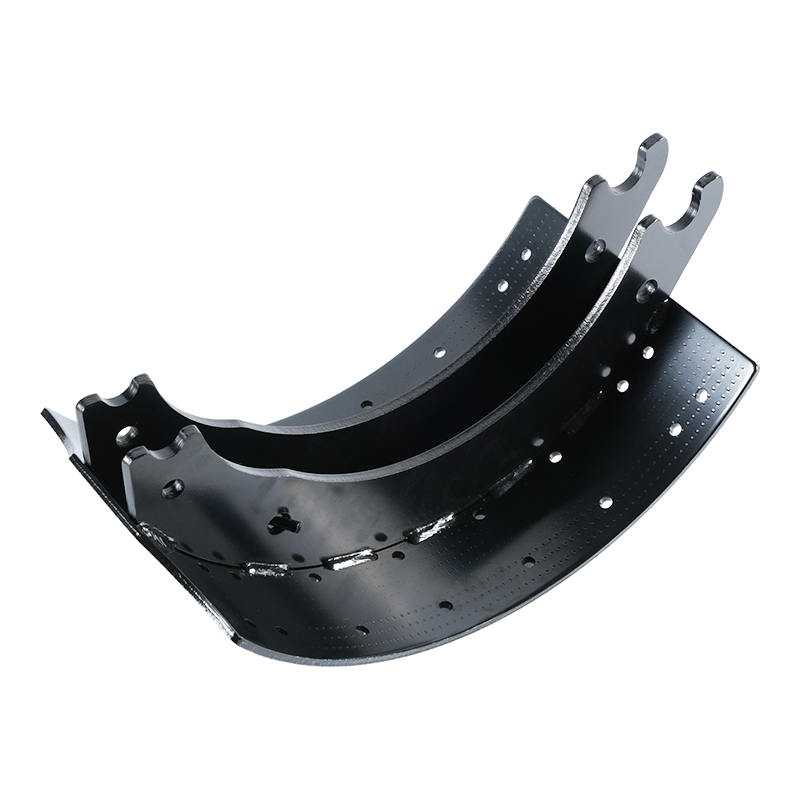Understanding Rear Front Brake Shoes: The Unsung Heroes of Your Vehicle's Safety
 2025.04.07
2025.04.07
 Industry News
Industry News
When it comes to vehicle safety, most people think about airbags, seatbelts, or even advanced driver-assistance systems. However, one crucial component often goes unnoticed until it’s too late—rear front brake shoes. These unassuming parts play a vital role in ensuring your car stops safely and efficiently, yet they rarely get the attention they deserve.
What Are Rear Front Brake Shoes?
Rear front brake shoes are part of the drum braking system found in many vehicles. Unlike disc brakes, which use calipers and pads, drum brakes rely on brake shoes to create friction and slow down the wheels. These shoes are curved metal pieces lined with a high-friction material that presses against the inside of a rotating drum when you apply the brakes. While modern cars typically use disc brakes for the front wheels due to their superior stopping power, many still incorporate drum brakes in the rear—and that’s where rear front brake shoes come into play.
It’s important to note that “rear front” might sound contradictory at first glance, but this terminology refers to the positioning within the specific axle assembly. Essentially, these shoes are designed for the rear section of the braking system but align structurally with the forward-facing aspect of the mechanism.
How Do They Work?
The process begins when you press the brake pedal. Hydraulic pressure is transmitted through the brake lines to the wheel cylinders located inside the drum assembly. This pressure forces the brake shoes outward, causing them to make contact with the inner surface of the drum. The resulting friction slows the rotation of the wheel, bringing the vehicle to a stop.
While this may seem straightforward, the design and materials used in rear front brake shoes significantly impact performance. For instance, higher-quality brake shoes can handle heat better, resist wear over time, and provide more consistent braking under various conditions. On the other hand, worn-out or low-quality shoes can lead to reduced braking efficiency, increased stopping distances, and even dangerous situations like brake failure.
Why Should You Care About Rear Front Brake Shoes?
Safety First
Your ability to stop quickly and reliably could mean the difference between avoiding an accident and being involved in one. Since rear brakes complement the primary stopping force provided by the front brakes, any compromise in their functionality can put you and others at risk.
Longevity Matters
Brake shoes don’t last forever. Over time, the friction material wears down, reducing their effectiveness. Regular maintenance and timely replacements ensure your vehicle remains safe and roadworthy.

Cost-Effective Maintenance
Replacing brake shoes is generally less expensive than repairing or replacing entire braking systems damaged by neglect. By staying proactive, you save money in the long run while also extending the life of related components like drums and wheel cylinders.
Smooth Driving Experience
Worn brake shoes can cause vibrations, squealing noises, or uneven braking. Keeping them in good condition ensures a smoother, quieter ride.
Signs It’s Time to Replace Your Rear Front Brake Shoes
If you notice any of the following symptoms, it’s likely time to inspect or replace your brake shoes:
A grinding noise when braking (indicating worn-out friction material).
Excessive pedal travel before the brakes engage.
The vehicle pulls to one side during braking.
Visible damage or excessive wear on the shoes during inspection.
Ignoring these signs can lead to costly repairs or unsafe driving conditions. Always consult a professional mechanic if you’re unsure about the state of your braking system.

 Eng
Eng  中文简体
中文简体









